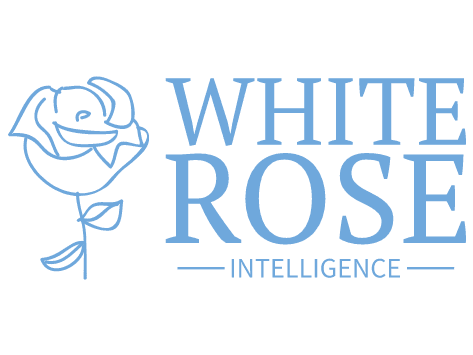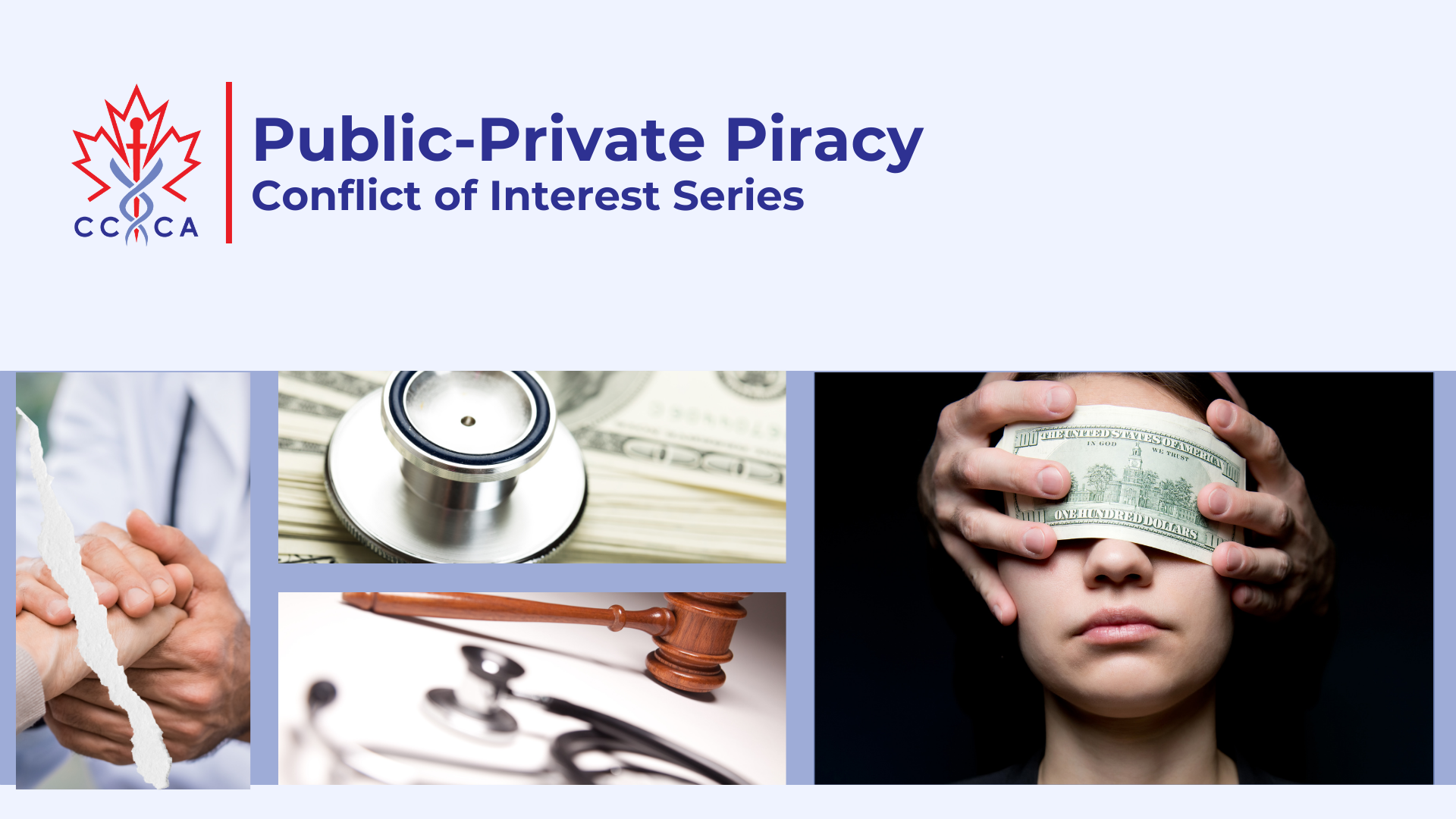Public Institutions and Corporate Power Structures: The Role of Conflict of Interest in Shaping COVID-19 Pandemic Mitigation Policies
Originally published by the Canadian Covid Care Alliance.
Matthew Evans-Cockle, Liam Sturgess, Deanna McLeod
Throughout the declared pandemic, it was generally assumed that the COVID-19 response in
Canada was led by independent scientists and elected representatives whose primary motivation was to promote public welfare. In reality, however, our COVID-19 response was largely directed by individuals and corporations with ideological and financial interests independent of, and in some cases contrary to, public welfare. These individuals and corporations appear to have guided pandemic policy in order to ensure outcomes in line with their own private interests with little regard to the general well-being of Canadians.
Rather than respecting reasonable boundaries between regulatory, political, and corporate interests, public health’s management of the COVID-19 crisis instead invited the blurring, and in some cases, the erasure of these lines. The normalization of public-private partnerships in the context of emergency response poses a serious threat to the public health and well-being for which public institutions and agencies, like the Public Health Agency of Canada, are responsible. When such public-private partnership is normalized, the result is not the support, but the capture of public institutions.
In responding to COVID-19, large corporations and their affiliated interests took full advantage of the opportunity represented by the declared pandemic to maximize profit and maintain growth, while endorsing public health policies that crippled the small independent business sector. This inevitably created conditions of severe hardship and widespread precarity for the working middle class. The massive transfer of wealth that took place, enabled and propelled by disastrously ill-advised pandemic mitigation policy, is no crude “conspiracy theory.” It is a hard, cold, and ugly fact. The destructively exploitative profiteering that occurred throughout the declared pandemic is, of course, shocking. At the same time, however, it is entirely consistent with the nature and operation of the marketplace and of the
corporate powers striving for dominance within that marketplace.
Those corporations with the financial and political means–organizations that are motivated to guide societal responses to crises–will understandably devote their resources to areas of research, development, and public relations that align with and promote their own pre-existing biases, worldview, and interests. Not only corporate bodies, but individual researchers, academics, students, and others who rely on outside funding, are all professionally inclined to pursue research and lines of argument, and to adopt or endorse public positions that will increase their opportunities for funding and career advancement. As a result of this natural selection bias–in favour of professionally advantageous perspectives and endeavours–alternative perspectives, ideas, and paths of inquiry will be outcompeted.
Public institutions, and particularly those within the domain of public health, tend to have laudable goals, mission statements, and mandates clearly aligned with their designed purpose to serve and protect the public good. Over the past decades, however, and most acutely during the declared pandemic, many of these public organizations have chosen to engage in partnerships with private sector entities. As a result of this choice to engage in public-private partnerships, these organizations are becoming increasingly dependent upon external and private sources of funding. In so doing, they are not only compromising their integrity as organizations whose intended purpose is to promote the public welfare, but by their
example they are themselves normalizing the public-private partnership model.
On the face of it, public-private partnership sounds like a good thing; it suggests the idea that everyone is working together towards a common goal or set of goals. However, when it comes to the interests of powerful corporations capable of exerting influence on a global scale, there is little evidence those interests ever meaningfully intersect in positive, healthy, and peaceful ways with the interests of the average global citizen. It bears constant repeating, and it should be an ever-present consideration for anyone advocating on behalf of the public good: it is absolutely essential that public institutions remain independent from the private sphere. Particularly when one is dealing with public regulatory bodies, it is vital that the regulatory body remain independent of the private sector industries they regulate. It is equally vital that these regulatory bodies also remain independent of any overarching state and federal
bodies that might themselves be leveraged by private sector interests.
Regulatory bodies are comprised of individuals with a special mandate to protect the public welfare. Individuals outside of these regulatory bodies–individuals who are not bound by these same mandates, and who may be subject to significant conflicts of interest that might bias them against promoting the public welfare–need to be excluded from the decision-making processes of public regulatory bodies.
Over the course of the declared pandemic, the most obvious and flagrant example of private sector influence upon public regulatory bodies, as well as upon public organizations more generally, was the influence exerted by the pharmaceutical industry. Pharmaceutical companies have a clear mandate to pursue financial gain. Their primary goal is to increase shareholder profit and investment. It is not in their mandate, nor a marketplace requirement, nor even a marketplace expectation that they determine the nature of the public good, let alone promote or protect it.
The COVID-19 crisis presented global corporations, including–but by no means limited
to–pharmaceutical companies, with an unprecedented opportunity to consolidate their wealth and power. Indeed, the transfer of wealth that took place, a transfer from the working class to the global billionaire elite, has been measured in the trillions. In its 2021 earnings report, Pfizer announced full-year revenues of 81.3 billion, reflecting a 92% operational growth.1 More generally, according to a recent report published by Oxfam International: “The richest 1% grabbed nearly two-thirds of all new wealth worth $42 trillion created since 2020, almost twice as much money as the bottom 99 percent of the world’s population.”2
At the same time, the COVID-19 crisis presented the global public with an opportunity to see just how much power the corporate sector can wield. The general public has seen its ability to influence public organizations, including regulatory bodies. The public has seen its ability to direct the emergency response, including the legislative processes, of sovereign governments. And through the hold it has upon both legacy media and the new social media platforms, populations around the world have seen the influence it is able to exert in shaping their understanding of and their reaction to these policies. In other words, people of all nations have observed that there are corporate power structures ready, willing, and able to shape global government policies and then to shape the global response to the policies they are promoting – policies ostensibly in service of the public welfare but manifestly serving to
increase the wealth, power, and finally control of these corporations over an increasingly captured public sphere.
References
- Pfizer reports fourth-quarter and full-year 2021 results. (2022, February 8). Pfizer.
https://web.archive.org/web/20220410162510/https://s28.q4cdn.com/781576035/files/doc_financials/2021/q4/Q4-2021-PFE-Earnings-Release.pdf ↩︎ - Thériault, A. (2023, January 16). Richest 1% bag nearly twice as much wealth as the rest of the world put together over the past two years. Oxfam International.
http://archive.today/2023.01.19-142825/https://www.oxfam.org/en/press-releases/richest-1-bag-nearly-twice-much-wealth-rest-world-put-together-over-past-two-years ↩︎

